DA LATA / “Cores”
The even rhythm of the Cuban tumbao along with a singing, open tone…defines what are commonly known in English as "conga" drums. In Spanish the name is pronounced KOHN-ga. A conga is a group dance of African roots popular in many Latin American countries. The rhythm for the dance is also called conga and is commonly played and danced during Carnival (in Spanish, Carnaval). …
The drums played with the dance are commonly referred to as "conga" drums but the actual name for the drums in Spanish is tumbadora (toom-bah-DOR-ah). In English, we usually just use the term "conga drums." The drums are constructed in various sizes.
In English, conga drum sizes are usually referred to as "tumba" for the largest, "conga" for the middle size and "quinto" for the smallest. You sometimes find an even smaller solo drum referred to as a "requinto" and the smallest conga of all is called a "Ricardo" conga which is about ashiko size and played to the player's side suspended from a shoulder strap. It was popularized in the band of Desi Arnaz in the 50s from which it more or less gets its name.
—Ben Jacoby, from the homepage of www.drumdojo.com
Buckle up, folks. Stow your luggage and prepare for take off. We’re about to go on a journey.
“Every time I hear the crack of a whip,” Marley once sang, “My blood runs cold.” I know what Bob meant, because every time I hear the sound of a conga drum, my blood runs hot. There is something about the sound of skin and bone striking wood and leather that can’t be duplicated by any other instrument. There’s an almost mystical quality to the tone. The sound is like its own echo, a metaphorical beat of the heart. The sound of a conga drum is both round and hard. Taut and warm. Fleeting and memorable. The sound of a conga drum hits you like a jab in the gut yet caresses you like a lover’s hands. There is something about the sound too, that encourages both simplicity and meticulousness. So many conga songs seem to be the result of their creators having stripped their musical selves down to the essential. It certainly doesn’t hurt that the musicians who choose to use hand percussion are usually those who have a conscious investment in the history of their people’s culture.
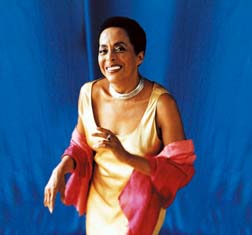
None more so than Peruvian singer/poet/historian Susana Baca. Baca’s music is a part of her dedicated effort to embrace the African elements and retentions in Peruvian music and culture. What I like about Baca’s music is that she pursues her agenda without artifice or proselytizing. There is nothing more annoying than having a good song ruined by well-meaning but distracting intellectualism. Whether it’s academically or artistically, Baca knows her stuff. But when it’s time to sing and play, she and her people just sing and play; they save the highbrow stuff for the lecture hall, where it belongs. According to Baca’s website, "Se Me Van Los Pies" (“Look How My Feet Go”) is based on the festejo, “a festive and playful rhythm that’s been danced in Peru since the last century” and which “was widely adopted by the black populations along the coast.” Midway through “Se Me Van,” Baca’s band abruptly shifts from the festejo rhythm to something that sounds like American hip-hop. You don’t have to be working on a doctorate thesis to get Baca’s point. This track is from the Susana Baca album. (By the way, in the coming weeks, we’ll be doing a full feature on Susana Baca.)

From Peru, we travel some 1700 miles northeast to Puerto Rico. Or rather, we pass through Puerto Rico on our way to Spanish Harlem and the Bronx, New York City. “Llego La India” (“India’s Arrival,” sort of) is a collaboration between the Princess Of Salsa, Linda Viera Caballero BKA “La India” and legendary pianist and bandleader Eddie Palmieri. Although she was raised in the Bronx and still calls that borough home, La India was actually born in Puerto Rico.

Palmieri was born in Spanish Harlem, but both of his parents are island-born Puerto Ricans. Their collaboration from the album Llego La India is based on the son rhythm, a derivation or style of the clave rhythm, itself derived from West Africa by way of Cuba. It is sometimes said that all music we refer to as ‘salsa’ can be traced back to this rhythm, and therefore, to Africa. As for me, I just call it hot. Here in San Diego, the humidity almost never rises above 50% or so, but on the rare occasions that it does, I like to crank up hot salsa tunes like this one. If you’re going to sweat, I figure, why not sweat in style? By the way, La India happens to be married to ‘Little’ Louie Vega of Masters At Work—a collective of musicians we’ve covered on several occasions here at BoL.
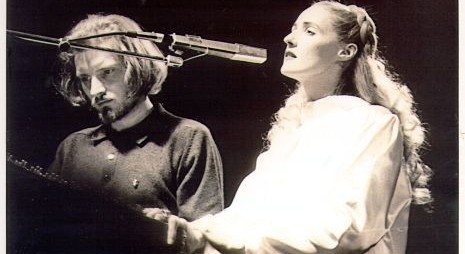
Leaving New York City, we head 3,400 due east to another of the world’s great cultural mash-ups, London, UK. (Technically, our trip requires a stop-over in Melbourne but seeing as how Australia is on the other side of the world, we’ll stick with a more direct route.) Dead Can Dance is Brendan Perry and Lisa Gerrard, both originally of Melbourne, but their musical success came after their relocation to the UK. First things first: don’t be scared off by the name. Brendan Perry explains it this way:
The album artwork [of our debut], a ritual mask from New Guinea, attempted to provide a visual reinterpretation of the meaning of the name Dead Can Dance. The mask, though once a living part of a tree is dead; nevertheless it has, through the artistry of its maker, been imbued with a life force of its own. To understand why we chose the name, think of the transformation of inanimacy to animacy. Think of the processes concerning life from death and death into life. So many people missed the inherent symbolism, and assumed that we must be "morbid gothic types," a mistake we deplored and deplore.*
“Spider’s Strategem” is taken from Dead Can Dance’s 1993 album Into The Labyrinth. It is a repetitious, trance-like piece based on a conga loop (at least, I think it’s a loop) and Lisa’s abstract singing/chanting. Before I actually listened to the band, I assumed that DCD’s music would be morbid and morose. Nowadays, I don’t think that’s the case at all. You be the judge.
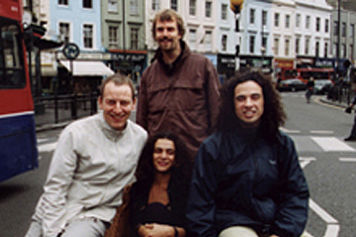
Let’s head back to South America. Before we leave London though, we’re picking up a couple of co-travelers: DJ/producer Patrick Forge and mutli-instrumentalist Chris Franck. Oh, I almost forgot. We also have to make a quick stop-off in Lisbon, Portugal to hook up with master percussionist Oli Albergaria Savill. Our ultimate destination is São Paulo, Brazil, where we’ll meet up with Liliana Chachian, the voice of one of my all-time favorite albums, Da Lata’s Song's From The Tin. The whole ‘European DJ with the Brazilian vocalist’ thing is prevalent enough to be verging on cliché, but for me, Da Lata’s first album excels at everything good about cross-cultural musical collaboration (it is surprising, inspiring and eclectic) while avoiding the bad stuff (it isn’t quirky, exploitative or imitative). One of the reasons Songs From The Tin is so successful is because both Chachian and Savill had a hand not just in the performance but in the composing as well. “Cores” is Savill and Chachian’s spotlight piece. Over a sinewy but rich sound-tapestry of percussion, Chachian’s lyrics glide and soar. “Cores” means ‘colors,’ I think; other than that, I have no idea what Chachian is singing. Still, this song always leaves me feeling positive and inspired.
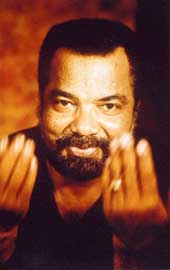
We’re heading back East again. This time, we’re going all the way back home. ‘Home’ meaning the spiritual home of the drum: Africa. In 1972, track and field star Bonga Kwenda (née José Adelino Barceló de Carvalho) was forced to leave his home-country of Angola for the safe haven of Rotterdam, Holland. On arriving there, he recorded his now-classic Angola 72 album, along the way discarding his Portuguese name. The Angolan authorities (who were still under Portuguese rule) didn’t take quietly to the defiant, ‘seditious’ tone of Bonga’s lyrics—which called for an immediate end to colonial rule—and an international warrant was issued for his arrest. Until 1975, when the Portugal finally relinquished control of Angola, Bonga led a nomadic existence, moving constantly to avoid extradition and probable prosecution. This quote, from an April 2004 New York Times piece does an excellent job of summing up Bonga’s unique melding of various African and Brazilian styles, instruments and languages:
He [Bonga] sings in a mix of Portuguese and Angolan languages, and his music is rooted in an Angolan beat, semba, that is related to the Brazilian samba by way of Angolan slaves sent to Brazil. It is underlined with the buzz and scratch of the Angolan dizanka, a notched stick used as a scraper. Through the years Bonga has merged Angolan rhythms with styles from elsewhere, particularly Afro-Portuguese ones like samba and the Cape Verdean ballads called morna.
Today, some 17 albums later, Bonga is considered one of the greatest of the numerous internationally-known African musicians. He also remains committed to political struggle, as is immediately apparent given the title of his latest (2004) album, Kaxexe, which means ‘In Hiding.’
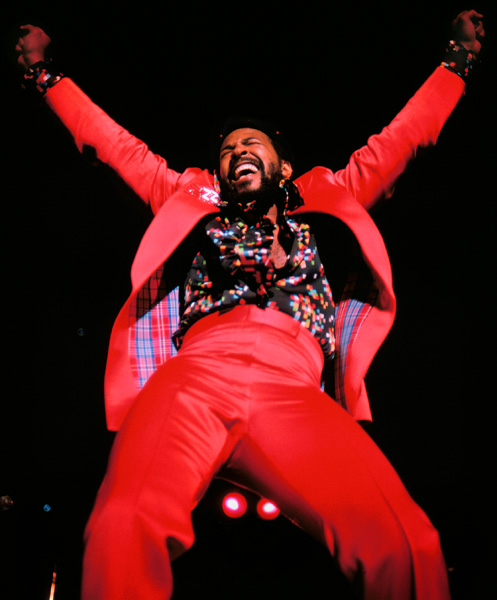
I’d intended to wrap things up with Bonga’s tune, but then I realized that we’ve traveled all over the globe, and along the way we’ve heard from Irish musicians from Australia; Puerto Rican musicians from New York; and Portuguese and British musicians in Brazil, to name just a few, but we haven’t heard a note from Black America itself. So, let’s travel one last time. We’re going to take that ignominious 7,000-mile journey from West Africa to the Americas—only this time, our destination isn’t Cuba, Haiti, Brazil or Jamestown, Virginia. Instead, we’re going to make our last stop in Detroit, Michigan AKA Motown, USA. The artist is Marvin Gaye. The tune is the ‘Vocal & Rhythm’ mix of “I Want You,” taken from the Deluxe Edition of I Want You.
And, since Marvin’s record speaks for itself, we’ll leave you with this: Thanks for flying with Breath of Life. Should your future plans call for travel…. You know the rest.
—Mtume ya Salaam
*From the Dead Can Dance FAQ at http://www.dcdwithin.com/dcd.pl?caduceus=faq.
Drum beat / Heart beat
Mtume, I have two responses, one auditory and one anecdotal. Next week I will post some conga tracks in an overview format. I don’t know that I will be flying all over the globe but I do know that Nigeria, Cuba and the USA are on the agenda and probably Jamaica and Brazil, but we’ll see. Also, I really, really like the India track even though I don’t particularly “like” the sound of her voice. Eddie is killing on piano. The arrangement is super hip and when India starts her shout outs, I know that drives the dancers nuts. The other two tracks I dig immensely are Susana Baca coming up out of Peru, boldly so, blackly so, with a political consciousness matched only by the seductive softness of her singing, whose deceptive quietness is the South American twin of our “cool” concept. On the other side of the ocean, brother Bonga is a beat beast (and I mean that in a good way!).
Now for the anecdote. Last night while preparing this week’s write up I considered doing Leon Ware the singer/performer covering Leon Ware the composer. He had three extremely important hits originally recorded by Quincy Jones, Minnie Riperton and Marvin Gaye. When I pulled out my supporting CDs, Marvin’s Deluxe Edition of the I Want You album was among them, which is where you got the version of “I Want You.”
Early in his professional career, Marvin Gaye was a drummer, studio musician and composer, rather than primarily a vocalist and composer. In the Sixties, yours truly was a semi-professional drummer. I gave up drumming for pursuing a literary career. I remain really, really interested in rhythm even though I do not play the drums professionally. Yet, there has always been a drum of some kind in the house, just as there has always been a camera of some kind—photography was my first love.
All of which is to say, Mtume, your decision to do a global conga overview resonates with me and has inspired me to put together a musical response. I believe the heart is the first drum and the voice the first instrument. To be continued… next week for sure, and forever undoubtedly.
—Kalamu ya Salaam
This entry was posted on Sunday, June 25th, 2006 at 12:46 am and is filed under Contemporary. You can follow any responses to this entry through the RSS 2.0 feed. You can leave a response, or trackback from your own site.
5 Responses to “DA LATA / “Cores””
June 26th, 2006 at 9:53 am
Se Me Van Los Pies is tight, even has something for the Hip-Hop folks in it. Cores has this eerie ethereal chant to it. Balumukeno is akin to Salsa dancing than a tribute to the Congas. Se Me Van Los Pies is my favorite though. It reminds me of Tribute to Obabi of the Last Poets. I’m with Dave Chappelle, certain rhythms are just instinctive. Whether African, Cuban, Native American, etc.
June 26th, 2006 at 3:55 pm
This music is delicious. I have been digging Cores for awhile but didn’t know its title. Thanks.
one love,
Ekere
June 27th, 2006 at 11:25 am
Yes, yes –more Susana Baca. I picked up a CD in the library and renewed it several times. It’s on my Amazon wish list for the next time that I go on a buying spree.
June 29th, 2006 at 11:36 am
That Marvin Mix is sexy as HELL!!! Any man facing rejection should play that song for his woman of interest. I am willing to bet money that she’ll rethink her decision… Shoot, I’m rethinking a few right now
October 6th, 2007 at 10:45 pm
Hi everyone, im Zezé im from mexico and i think that cores are a sublime marvelous and fantastic song… someone know where can i found the lyrics of the song?
Leave a Reply
| top |